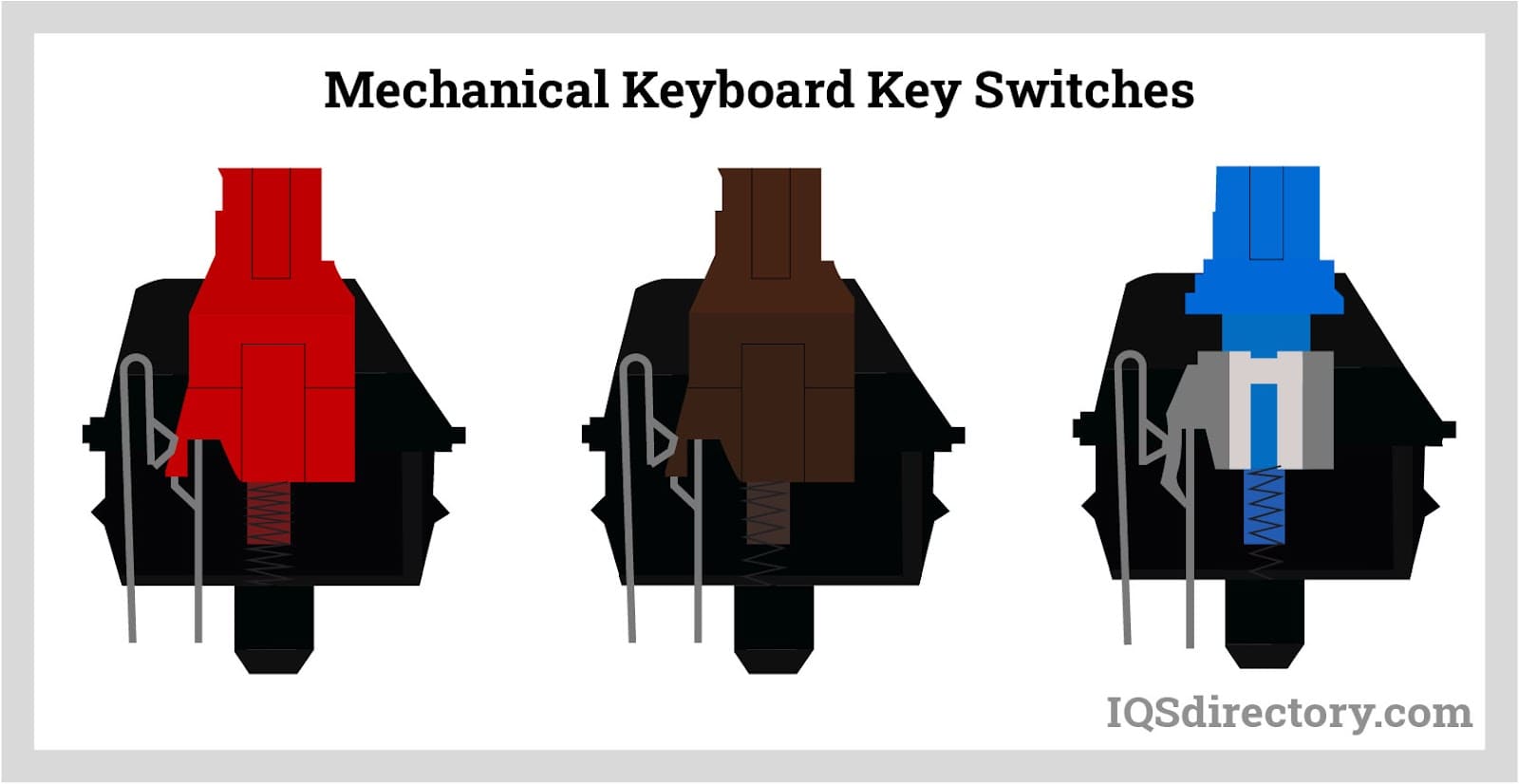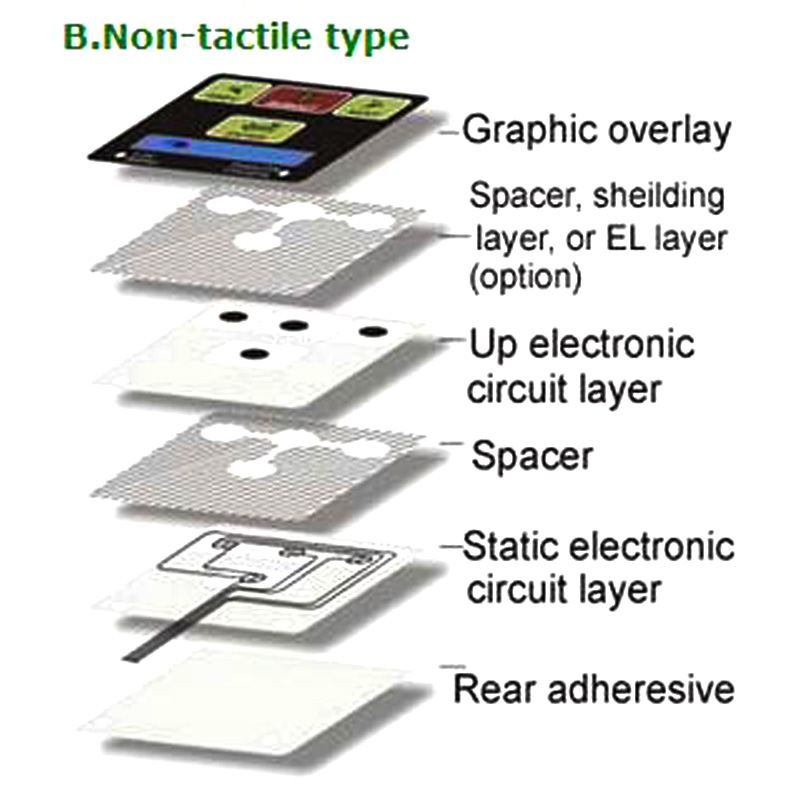Membrane switch vs. traditional buttons: pros and cons
Wiki Article
The Manufacturing Process Behind Membrane Change: What You Need to Know
The manufacturing process behind membrane switches over combines cautious design, product option, and quality assurance. It begins with recognizing the ins and outs of membrane button layout and advances via different phases, including material selections and printing methods. Each phase plays an essential function in ensuring capability and resilience. The complexities of layer building and the strenuous testing criteria may expose understandings that are not immediately evident. What exists past these foundational aspects?Recognizing Membrane Switch Style
Membrane layer switches may appear easy at very first glimpse, their style entails detailed considerations that guarantee functionality and sturdiness. The style procedure starts with a detailed understanding of user requirements, consisting of the user interface's desired application and environmental factors. Ergonomics is a crucial element, as the design needs to assist in convenience of usage while ensuring that responsive comments fulfills customer expectations.Moreover, the layering of parts, such as visuals overlays, glue layers, and conductive traces, have to be specifically engineered. membrane switch. This split arrangement not just influences the switch's responsiveness but also influences its long life. Interest is offered to the sealing techniques used to safeguard against moisture and dirt, which might compromise efficiency. In addition, style considerations reach appearances, where color design and aesthetic quality improve user experience. Inevitably, the style of membrane layer changes balances capability, individual experience, and resilience, ensuring that they fulfill the demands of numerous applications efficientlyProducts Utilized in Membrane Change Production
When picking materials for membrane layer button production, it is vital to ponder both performance and durability. The key materials consist of polyester and polycarbonate films, which offer flexibility and toughness. These films are often covered with glue to ensure correct bonding to substrates. Conductive inks, generally made up of silver or carbon, are critical for producing electric connections within the button, permitting trustworthy operation.Additionally, a safety layer, such as a hard layer, is regularly related to improve scrape resistance and longevity. The option of backing product, such as acrylic or foam, can substantially impact the switch's responsive feeling and overall individual experience. In addition, various environmental aspects, consisting of temperature level and humidity, need to guide material choice to ensure peak efficiency in particular applications. Inevitably, the ideal mix of materials adds to the membrane layer button's performance and lifespan, making notified selections essential for producers.The Printing Process: Creating Graphics and Text
The printing procedure in membrane layer button production plays a considerable function in creating high-grade graphics and message. Different visuals layout strategies are utilized to ensure visual charm and performance, while careful ink option approaches are essential for durability and efficiency. Recognizing these components is basic for accomplishing finest lead to membrane layer button style.Graphic Design Techniques
Graphic layout methods play a vital role in the printing procedure of membrane layer switches, as they specify exactly how graphics and message will eventually appear on the last item. Reliable graphic layout includes the strategic use colors, layouts, and typefaces to enhance readability and aesthetic appeal. Developers frequently make use of vector graphics for scalability, making sure that photos stay sharp at various dimensions. In addition, attention to comparison and alignment is crucial, as it influences individual communication and aesthetic top quality. The incorporation of branding aspects, such as logo designs, should be taken care of with treatment to preserve brand name integrity. In general, thoughtful visuals design methods add substantially to the functionality and beauty of membrane layer buttons, impacting individual experience and item efficiency.Ink Selection Methods
Choosing the ideal ink is vital for attaining the desired visual high quality and longevity in membrane switch production. Different ink kinds are utilized, consisting of solvent-based, water-based, and UV-curable inks. Each type uses distinctive features, such as resistance, attachment, and adaptability to environmental aspects. Solvent-based inks are usually preferred for their durability and dynamic colors, while water-based inks are much more ecologically friendly yet might have constraints in attachment. UV-curable inks give quick treating and robust performance. Additionally, color matching methods ensure that the chosen inks align with design specifications. Inevitably, the selection of ink have to think about aspects such as application approach, substratum compatibility, and end-use demands to accomplish exceptional lead to membrane layer button graphics and text.Layer Building and Assembly
Material Selection Refine
A careful selection of materials is important in the manufacturing process of membrane switches, as it directly affects performance and longevity. The key products used include polyester, polycarbonate, and numerous conductive inks. Polyester is often preferred for its superb resistance to chemicals and abrasion, making it appropriate for harsh environments. Polycarbonate, on the other hand, provides exceptional clarity and impact resistance, which is valuable for applications requiring presence and robustness. Conductive inks, usually made up of silver or carbon, are crucial for creating reputable electric pathways. Furthermore, the choice of adhesive materials impacts the general stability of the button - membrane switch. Examining factors such as environmental direct exposure, tactile responses, and aesthetic requirements overviews makers in picking the finest materials for their specific applicationsLayer Bond Techniques
Sticking layers in membrane button building and construction is a vital process that assures capability and longevity. Numerous attachment methods are utilized to secure ideal bonding between layers, which generally consist of the use of adhesives, warmth, and pressure. Pressure-sensitive adhesives (PSAs) are generally made use of for their simplicity of application and prompt bonding abilities. Additionally, thermal bonding methods can be applied, where warm is utilized to turn on adhesive residential or commercial properties, protecting a strong bond. The selection of bond method largely relies on the products included and the particular application requirements of the membrane switch. Correct placement and consistent application of adhesives are crucial to stop issues, safeguarding the button runs effectively throughout its designated life expectancy.High Quality Control Actions
Assuring quality assurance during the layer building and assembly of membrane buttons is vital for maintaining efficiency and reliability. This procedure normally includes numerous critical actions, consisting of extensive inspections at each stage of production. Makers utilize sophisticated screening approaches, such as peel tests and attachment assessments, to validate the stability of layer bonds. In addition, aesthetic assessments are conducted to identify any flaws in printing or material disparities. Ecological conditions, such as temperature and moisture, are meticulously monitored to guarantee ideal healing and attachment. Regular calibration of devices assists keep specific manufacturing requirements. By implementing these quality assurance actions, producers can substantially minimize the threat of product failure, guaranteeing that the final membrane layer changes satisfy the needed specifications and customer expectations.Evaluating and Quality Assurance Procedures

Innovations in Membrane Layer Switch Technology
As improvements in technology proceed to develop, membrane layer switches are gaining from ingenious developments that boost their performance and user experience. One noteworthy innovation is the combination of capacitive touch innovation, which permits for even more user-friendly and responsive customer interfaces. This change not just enhances visual appeals however likewise minimizes mechanical damage, prolonging the lifespan of the switches.Additionally, improvements in graphic overlay materials have caused improved toughness and resistance to environmental elements such as wetness and UV light. These products currently supply boosted clearness and illumination, more elevating the visual appeal.Furthermore, the incorporation of smart technology is transforming membrane changes into interactive control board, allowing connection with IoT gadgets. This connectivity fosters a smooth individual experience, leading the way for applications in different sectors, from medical care to consumer electronic devices. Collectively, these innovations setting membrane layer changes as crucial elements in modern tool design.Regularly Asked Questions
How much time Does the Membrane Layer Change Manufacturing Refine Take?
The duration of the membrane switch production procedure can vary substantially. Factors such as complexity, materials utilized, and manufacturing quantity influence timelines, with common manufacturing ranging from a few days to a number of weeks for completion.What Are the Common Applications for Membrane Layer Buttons?
Membrane layer buttons are frequently used in numerous industries, including automotive controls, household appliances, clinical tools, and customer electronics (membrane switch). Their versatility and longevity make them excellent for applications calling for straightforward interfaces and reputable efficiency in diverse atmospheresCan Membrane Switches Over Be Custom-made for Particular Requirements?

What Is the Lifespan of a Common Membrane Layer Switch?
The lifespan of a regular membrane button differs, however usually, it varies from 1 to 5 million cycles. Variables such as use, setting, and material high quality greatly influence durability and total performance over time.

Are Membrane Layer Switches Over Environmentally Pleasant?
The ecological friendliness of membrane layer switches over differs. Some materials used might not be recyclable, while others can be environment-friendly. The general influence depends on making techniques and materials, necessitating mindful factor to consider during choice and disposal. The manufacturing process behind membrane layer switches combines mindful layout, product option, and high quality control. It begins with comprehending the details of membrane button design and advances with numerous stages, consisting click for info of material selections and printing techniques. When selecting materials for membrane layer switch production, it is crucial to ponder both efficiency and durability. A careful choice of materials is essential in the manufacturing procedure of membrane layer buttons, as it straight affects performance and sturdiness. The selection of attachment method greatly depends on the materials included and the particular application requirements of the membrane switch.Report this wiki page